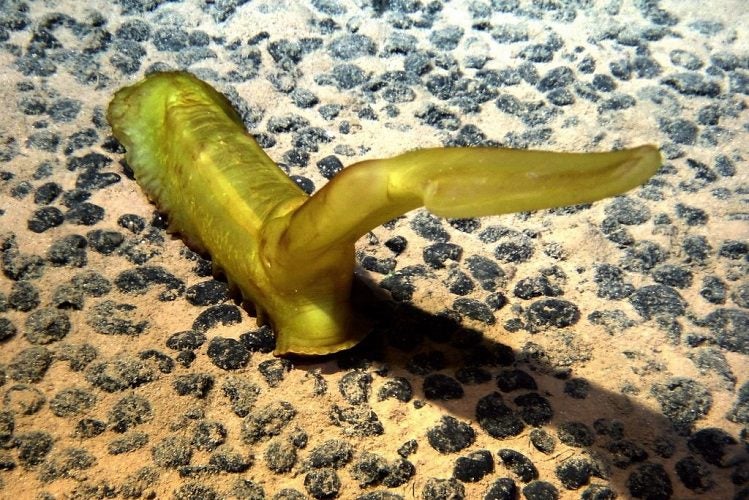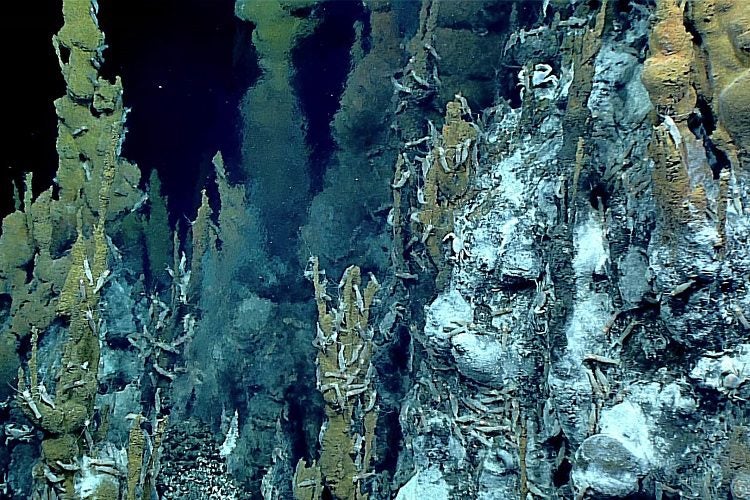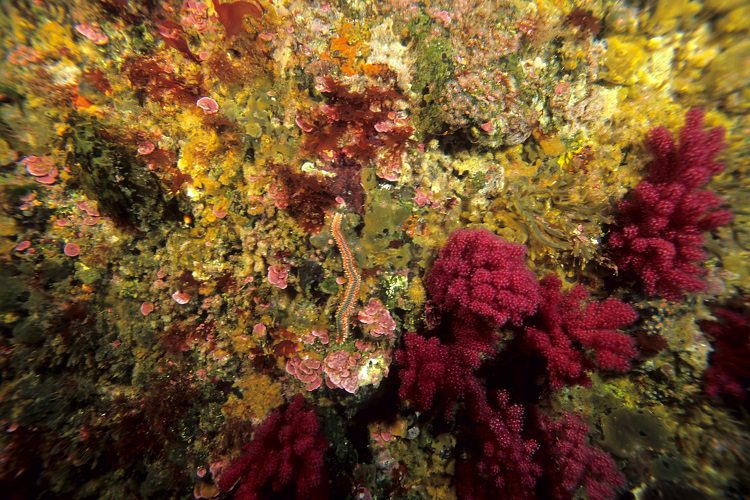October 18, 2023
Ask Dr. Pauly: How does deep-sea mining affect marine life?
BY: Daniel Pauly
Deep-sea fish can’t cough, which means they’re in danger

Various companies are interested in mining metals in the deep sea, such as cobalt, nickel, and the like, to be used in the batteries of electric cars and other machines as we transition to renewable energy. Exploitable concentrations of these metals occur in the deep sea on top of seamounts, in deep-sea vents, and in the form of polymetallic nodules on the deep-sea floor.
Mining the tops of seamounts and deep-sea vents cannot mean anything but the destruction of these biodiversity oases.
Polymetallic nodules are associated with less beauty and biodiversity per square meter, though the abyssal seafloor supports some equally incredible life forms. Looking something like dug-up potatoes in a field, these nodules took millions of years to reach their present size but now face an increasingly real risk of exploitation.
How would companies go about collecting these nodules? Since they rest on muddy grounds at immense depths, polymetallic nodules would have to be collected by some underwater bulldozers, stirring up the mud they rest in. Then, when they are brought to the surface, the polymetallic nodules would have to be separated from the sediment stuck to them. So, lots of mud – millions of tons of it – would slowly sink from around the vessels collecting the nodules, and immense areas of the ocean would become turbid, like the lower reaches of rivers.
The delicate structure of fish gills, and the thin lamellae that allow oxygen to diffuse from the water into their blood, can be easily clogged. Therefore, fish species that live in turbid environments – like muddy estuaries, shallow seashores, and sediment-filled rivers – have evolved the ability to cough to prevent their gills from clogging by fine particles of silt and other suspended solids.1,2 Just like we humans do when nasty stuff gets into our lungs.
Deep-sea fishes and other organisms have also evolved over millions of years in an ecosystem without turbidity, that is, without gill-clogging particles. Like cavefish that gradually lost the use of their eyes, then their eyes themselves, after they colonized lightless caves, deep-sea fish can be expected to have lost the ability to cough. Coughing requires specialized muscles that are adequately innervated, i.e., an entire system of anatomic and neural adaptations that would cost the fish energy to maintain, yet would be useless in an environment that is never turbid.
Sadly, as a result, deep-sea fishes would almost certainly choke to death in turbid water, along with various other denizens of the deep such as giant amphipods.
Marine areas where polymetallic nodules are exploited would become devoid of non-microbial life. The marine mammals that feed on deep-sea fish would have left long before their prey fish choked to death because of the noise emitted by underwater bulldozers and engines during the mining process.
The statement, “deep-sea fish can’t cough,” expresses a profound insight about deep-sea mining: it is hostile to marine life. I, personally, can only hope that deep-sea exploitation by mining companies will never be allowed.
Deeper dive: Three types of deep-sea habitats at risk of mining
Accordion content.
Accordion content.

Abyssal Plain
The abyssal plain is an immense flat part of the deep seafloor that covers 50% of the Earth’s surface.
Containing cobalt, nickel, copper, and manganese, polymetallic nodules rest on the surface of sediment in vast fields. Animals like sponges, worms, and corals grow on the nodules, while the sediment underneath and surrounding waters host sea stars, sea cucumbers, fish, and more.
Hydrothermal Vents
Hydrothermal vents revealed to humanity how life forms and entire ecosystems can exist in the absence of sunlight.
Hydrothermal venting produces seafloor massive sulfides, which are small, ore-bearing structures with deposits rich in gold, nickel, copper, and other metals. These ores cannot be mined without destroying the ecosystems hydrothermal vents support.


Seamounts
Seamounts are underwater mountains that are home to corals and sponges, supporting an abundant food web and providing critical habitat for fish and marine mammals.
Cobalt-rich ferromanganese crusts, which accrete on the surfaces of seamounts, are enriched in other metals and rare-earth elements. The same ore that marine life uses for habitat is desired for deep-sea mining, but cannot be mined without destroying the ecosystem.
- Carlson , R.W. and Drummond, R.A., 1978. Fish cough response—a method for evaluating quality of treated complex effluents. Water Research, 12(1): 1-6. ↩︎
- Hughes, G.M., 1975. Coughing in the rainbow trout (Salmo gairdneri) and the influence of pollutants. Revue Suisse de Zoologie, 82(1): 47-64. ↩︎



